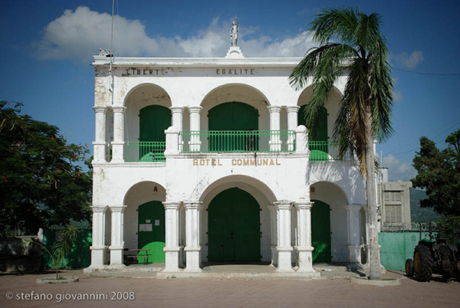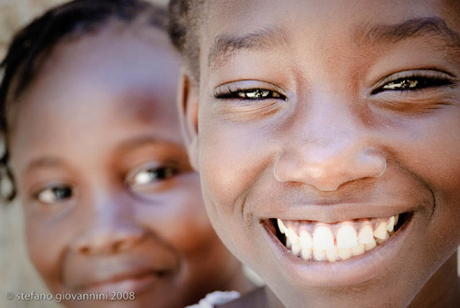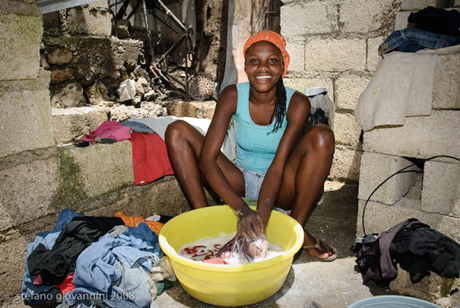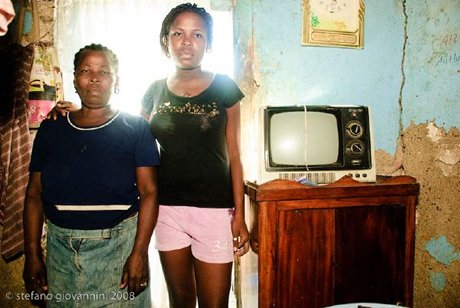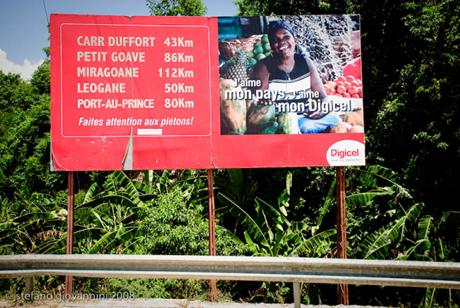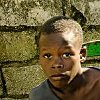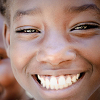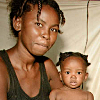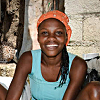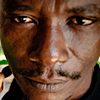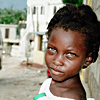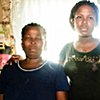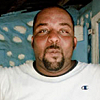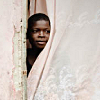photography
Haiti, 2008 A photo essay
by Stefano Giovannini
Photos were taken in Jacmel, Haiti in September 2008. The coastal town had been hit by 4 hurricanes and flooding in the preceding weeks.

A few km outside the center of Jacmel.
The river flooded and wiped out buildings along the banks. These kids were chopping up a fallen tree with a machete to make charcoal, a task that would take hours.
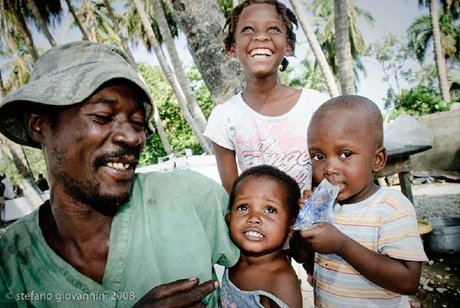
Fisherman Gaston with his kids on the beach in Jacmel. He lost his fishing boat in one of the hurricanes. Now he has no way to work. A new boat would cost him around US $700, a sum he does not have.
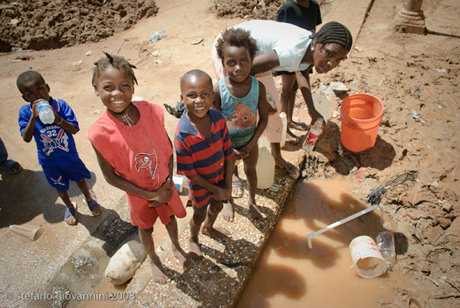
Central Jacmel.
The streets are still covered with mud and debris weeks after the hurricanes. The most indigent families have to travel to get clean water from public fountains.

Ofany Depeste, mother of 14, inside her house at #39, rue Culbilté Jacmel. The hurricanes damaged cheaply built houses. The corrugated metal roofs have been lost. The family does not have the $US 100 to buy a roof that would probably be lost again after another hurricane.
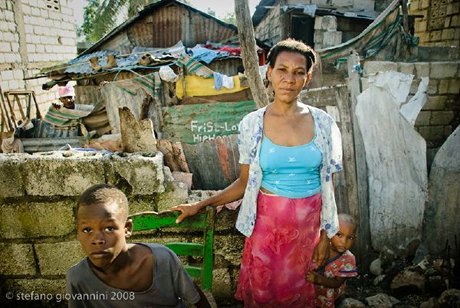
Madame Sover Dieudonné, another resident of rue Culbilté. The cheap cinder block houses on the street are vulnerable to storms and hurricanes.
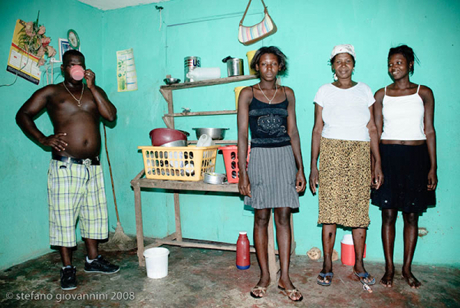
The houses of rue Mesmer have been flooded with mud and water from the nearby river. The residents have been cleaning up the streets. The open air drain canals are filled with debris.
This is inside one house. The walls and roof resisted the storms but the family lost beds, furniture, and other household goods.

Another family on rue Culbilté. Girls start having babies very young. Electricity is only available for about four hours every three to four days.
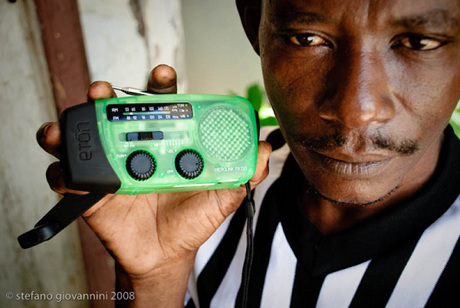
I left behind my Eton crank solar radio and flashlight. As blackout is the norm in the area, my friend and neighbor appreciated a radio that didn't need expensive batteries.

In La Fond, a rural village in the hills around Jacmel. That day the Haitian Red Cross distributed bags of soy and rice donated from Canada to hundreds of families. The hurricanes destroyed the season's banana crops. The trees and plants are still there but the fruit is gone.
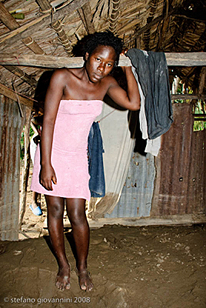
A rural house near Cayes Jacmel, 15 km east of Jacmel. Mud filled the homes built along the nearby river. Now the residents can almost bump their heads on the ceiling as the floors are almost a meter below the mud.

Another shot of the rural house near Cayes Jacmel, 15 km east of Jacmel. Mud filled the homes built along the nearby river. Now the residents can almost bump their heads on the ceiling as the floors are almost a meter below the mud.
Notes from Haiti, September 2008
September 12–13 I flew to Santo Domingo and took a bus across the border to Port Au Prince, Haiti. I spent a night at a friend of a friend's place in Delmas 33.
For the first time I realized that people there live with rationed electricity: 8 to 16 hours of electricity per day. Many back streets are just uneven, dirt roads.
I climbed on a roof and looked at the city at dusk. Looking down from the hill, the poorer part of the city extending to the waterfront looked like a conglomerate of dense and unfinished buildings.
From Port au Prince I took a tap tap bus to Jacmel. It took two and a half hours to travel 80 km on winding roads across steep hills and mountains. The tap tap I took was an old style American school bus, painted all over. There is no real schedule. The tap tap leaves when it is completely full, for maximum efficiency.
September 15–23 Dodo Ambroise offered me his kids' bed, but I could not accept. I told him I would stay in his painting studio bungalow and sleep on a foam mat.
I heard the roosters crowing—it was just before 6 am. The sun was up and I could not go back to sleep.
I walked up to an old lady in the street. Bought some strong, sweet coffee in a metal cup and some bread on the side.
I walked a bit aimlessly until I got to the cemetery. At the entrance someone had painted these words on the wall: Souviens-toi que tu es poussière.
Up the block by a big unpaved square, a school had been converted into a shelter. 600 people who lost their homes after the storms and hurricanes of the previous weeks found refuge there. They had little food and not enough medicines.
The young man in charge, Eliscar Luckenson, asked me what organization I was with. I told him I was on my own—just by myself.
I noticed a woman outside on the square wearing a traditional Haitian rural blue denim dress. She waved at me and gestured to follow her.
Ofany Depeste looks like she is in her 40s. She has 14 kids. Some are young adults, some are still young children. She lives in rue Culbilté, 200 meters down a barren, steep unpaved street on the side of the hill overlooking downtown.
Most of the corrugated metal roof had been swept off her house and many of the rooms were left uncovered. The cost to fix it is about $100.
Her neighbors live in similar houses, cheap constructions on the side of the hill. Some walls are cracked, and heavy rocks keep the roofs in place on windy days.
Everyone wanted to show me their home. Inside were lots of kids, old TVs, old stereos. No running water. Yet most of these people own a cell phone with prepaid minutes.
A girl in the back is behind a couple of banana trees. She was showering with a bucket and was just wearing a clean white towel around her torso.
In Jacmel walking can take long time. After the floods, the dirt roads became rocky trenches. I destroyed my flip-flops.
September 24, 2008 Came through immigration last night at JFK. The officer asked me where I had been. I said Santo Domingo and Haiti. He asked me what I was doing in Haiti with a sort of absent, bored expression on his face.
I told him I went to photograph the situation there.
He asked, "What is there to photograph?"
"They have some problems down there," I replied.
"Problems? What problems do they have in Haiti?" he asked me.
Stefano Giovannini is a self-taught photographer from Milan who relocated to New York City in the year 2000. He became interested in the arts and traditions of the Haitian community after a stay in Miami, and began covering the life and culture of the Haitian diaspora in Brooklyn. He has worked for both major and independent publications in Europe and the US, He is perhaps best known for his photographs of musicians, including Sonic Youth, Cat Power, DJ Olive, and many others.
 [an error occurred while processing this directive]
[an error occurred while processing this directive]


